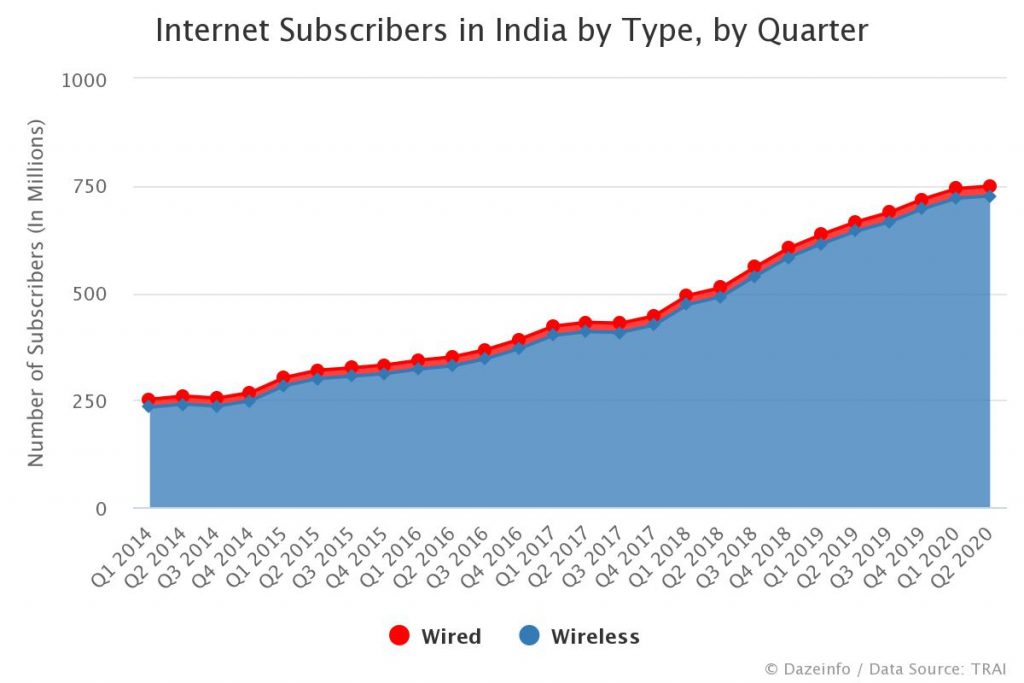Over the years, the Indian government has gathered a reputation for taking some steely and path-breaking decisions. And the ‘WANI’ of this latest decision is sure to echo in the invigorated din of the digital revolution in India.
In what is a milestone moment, the Indian government has given its blessing for the launch of a PM-WANI (Wi-Fi Access Network Interface) across the demography of the country. The announcement, which was made via a press release by the Union Cabinet, has revealed the ambitious plans for setting up of Public Wi-Fi Networks by Public Data Office Aggregators (PDOs) to provide public Wi-Fi service through Public Data Offices (PDOs) spread across length and breadth of the country.
With the green light to the DoT, the decision will surely accelerate the already growing proliferation of Broadband Internet services through Public Wi-Fi networks in India. The setting up of public data centers is set to unleash India’s potential for a pan-country Wi-Fi network in the country.
Going into the specifics, the proposed public Wi-Fi system is going to be a three-tier system, aimed at providing connectivity to India’s 1.36 billion strong population and bring them online. What is even more heartening, is that anyone is eligible to sign up to be a public data office (PDO). Though, as things stand, the government has identified to encompass popular haunts such as local tea shops and Kirana stores to be the centerpiece of PDOs. The idea is that businesses could bank upon services from telecom providers like Airtel, Jio, or any other Internet service provider (ISP) and use their physical location to provide Wi-Fi to virtually anyone who happens to be in the vicinity.
The second layer in the PM-WANI setup would constitute the PDO aggregators, who will be tasked with accounting and authorisation jobs. Finally, the third layer will be that of the app provider, once the application is made available through prominent App stores or the government’s website. This will be used by the registered users to discover WANI-compliant Wi-Fi hotspots nearby, displayed within the app, for accessing the internet service.
Minister of Electronics and Information Technology, Ravi Shankar Prasad, was also keen to stress that anybody signing up for PDO won’t be liable to apply for any license, registration or any initial fees whatsoever. In a strong statement of intent, the government plans to set up 1 crore data centres across the country under the initiative.
Under the initiative, India will also join the list of countries that offer fast and reliable public Wi-Fi services in their countries. More importantly, it will serve as a crunch step to strengthen the digital ecosystem of the nation and tap into the ocean of the still massively untapped internet users in the country, which still stands at an approximate number of 600 million in a country of 1.36 billion citizens.
As of Q2 2020, India has approximately 726.01 million wireless Internet subscribers, a 12.8% YoY increase.

The spawning public Wi-Fi networks will also aid in creating employment opportunities, enhancing the route for disposable incomes in the hands of small and medium entrepreneurs of India. Once functional, PM-WANI would inherently be a huge benefactor for goods and services tax network, unified payments interface, and other aspects, seeing as how India has championed the adoption of such services, making them even more conveniently accessible to the common man.
The move augurs well for the educational industry and students which hail from the lower strata too. While the pandemic has pushed greater adoption of online teaching methods, public Wi-Fi networks through common jaunts would help bridge their gap in connectivity. In order to realize these objectives, the Union Cabinet has also approved the provision of submarine optical fiber cable connectivity between the mainland (Kochi) and Lakshadweep Islands.
With the commendable decisions taken by the government, India is sure to usher in another chapter in Digital Bharat. Fasten your seatbelt citizens, and stay tuned for more updates.

